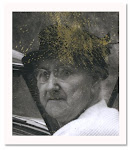Loewy was born in Paris in 1893, the son of Maximilian Loewy, a Viennese journalist, and Marie Labalme. An early accomplishment was the design of a successful model aircraft which then won the James Gordon Bennett Cup in 1908. By the following year he was selling the plane, named the Ayrel. He served in the French Army during World War I, attaining the rank of captain. Loewy was wounded in combat and received the Croix de Guerre. He boarded a ship to America in 1919, with only his French officer's uniform and fifty dollars in his pocket.
Early work
In Loewy's early years in the U.S., he lived in New York and found work as a window designer for department stores, including Macy's, Wanamaker's and Saks in addition to working as a fashion illustrator for Vogue and Harper's Bazaar. In 1929 he received his first industrial design commission to modernize the appearance of a duplicating machine by Gestetner. Further commissions followed, including work for Westinghouse, the Hupp Motor Company (the Hupmobile styling), and styling the Coldspot refrigerator for Sears-Roebuck. It was this product that established his reputation as an industrial designer. His design firm opened a London office in the mid 1930s. It still operates.
Pennsylvania Railroad
In 1937 Loewy established a relationship with the Pennsylvania Railroad, and his most notable designs for the firm were their passenger locomotives. He designed a streamlined shroud for K4s Pacific #3768 to haul the newly redesigned 1938 Broadway Limited (also by Loewy). He followed by styling the experimental S1 locomotive, as well as the T1 class. Later, at the PRR's request, he restyled Baldwin's diesels with a distinctive "sharknose" reminiscent of the T1. While he did not design the famous GG1 electric locomotives, he improved its appearance by recommending welded construction, rather than riveted, and a pinstriped paint scheme to highlight its smooth contours.
In addition to locomotive design, Loewy's studios performed many kinds of design work for the Pennsylvania Railroad including stations, passenger car interiors and advertising materials. By 1949, Loewy employed 143 designers, architects and draftsmen. His business partners were A. Baker Barnhart, William Snaith and John Breen.
Studebaker
Loewy had a long and fruitful relationship with the American car maker Studebaker. Studebaker first retained Loewy and Associates and Helen Dryden as design consultants in 1936 and in 1939 Loewy began work with the principal designer Virgil M Exner. Their designs first began appearing on late-1930s Studebakers. Loewy also designed a new logo which replaced the "turning wheel" which had been the trademark since 1912.
During World War II, American government restrictions on in-house design departments at Ford, General Motors, and Chrysler prevented official work on civilian automobiles. Because Loewy's firm was independent of the fourth-largest automobile producer in America, no such restrictions applied. This permitted Studebaker to launch the first all-new postwar automobile in 1947, two years ahead of the "Big Three". His team developed an advanced design featuring flush front fenders and clean rearward lines. They also created the Starlight body which featured a rear window system wrapping 180 degrees around the rear seat.
1953 Studebaker Commander Starlight Coupe
In addition to the iconic bullet-nosed Studebakers of 1950 and 1951, the team created the 1953 Studebaker line, highlighted by the Starliner and Starlight coupes (publicly credited to Loewy, they were actually the work Virgil Exner. The Starlight has consistently ranked as one of the best-designed cars of the 1950s in lists compiled since by Collectible Automobile, Car and Driver, and Motor Trend. At the time, however, the Starlight was ridiculed as bizarre (very similar from front or back). The '53 Starliner, recognized today as "one of the most beautiful cars ever made", was radical in appearance, as radical in its way as the 1934 Airflow. However, it was beset by production problems. The 1953 Studebakers were actually designed by Robert Bourke, member of the Loewy's studio but working permanently for Studebaker.
To brand the new line, Loewy also modernized Studebaker's logo again by applying the "Lazy S" element. His final commission of the 1950s for Studebaker was the transformation of the Starlight and Starliner coupes into the Hawk series for the 1956 model year.
Death and Legacy
Raymond Loewy became a U.S. citizen in 1938. Loewy retired in 1980 and returned to his native France. Loewy died in his Monte Carlo residence in 1986 at the age of 93. He was survived by his second wife Viola and their daughter Laurence. In 1992 Viola Loewy and British American Tobacco established the Raymond Loewy Foundation in Hamburg, Germany. The foundation was established to promote the discipline of industrial design internationally and preserve the memory of Raymond Loewy. An annual award of 50,000 Euros is granted to outstanding designers in recognition of their lifetime achievements. Recent grantees include Phillippe Starck and Dieter Rams. In 1998 Laurence Loewy established Loewy Design in Atlanta, Georgia to manage her father's continued interests in the United States. Laurence died on October 15, 2008 and is survived by her husband David Hagerman and their son Jacque Loewy. David Hagerman continues to manage Loewy Design and the Loewy Estate, which includes Laurence Loewy's vision for the establishment of a Raymond Loewy Museum of Industrial Design.






































